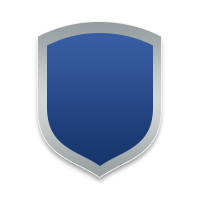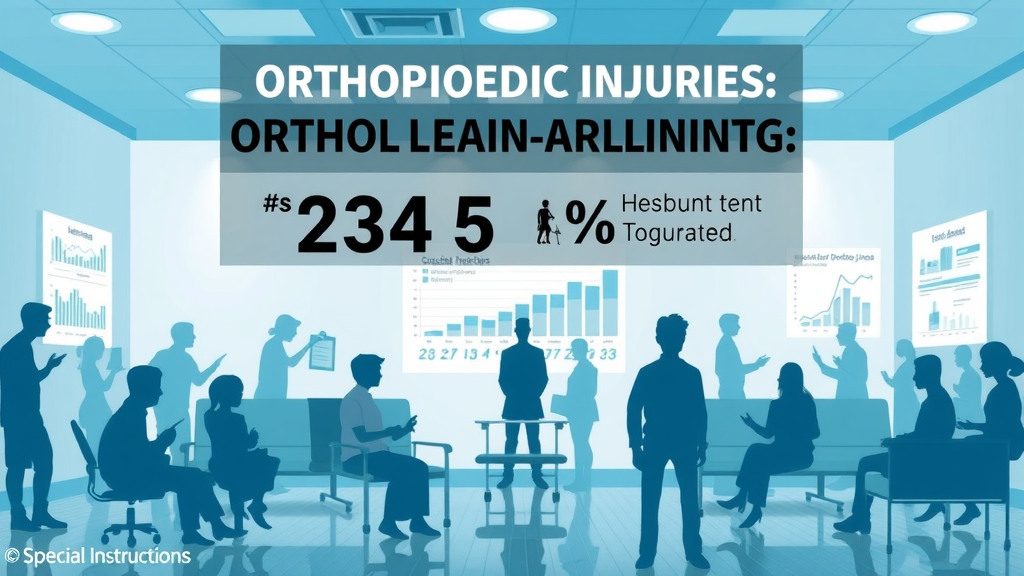Did you know that orthopedic surgeons perform over 3 million procedures annually in the United States—and more than 90% of patients report improved quality of life following surgery? Yet, finding the top orthopedic surgeons in Denton , especially one as highly regarded as Dr Tim Larson , can be daunting given the complex nature of orthopedic hand and bone care. If you’re searching for skilled expertise, unmatched patient experience, or straightforward access to accepted insurance plans , you’ll discover everything you need to make a confident choice right here.

Startling Facts About Orthopedic Surgery and the Top Orthopedic Surgeons in Denton Including Dr Tim Larson
Navigating orthopedic issues shouldn’t mean navigating confusion. Whether you’re facing carpal tunnel syndrome , an athletic injury, or chronic joint pain, connecting with the right orthopedic surgeon is a pivotal decision. Dr Tim Larson —a board-certified orthopedic hand surgeon —and his peers in Denton set the gold standard not only in technical prowess but also in patient-centered care.
Meet the leading minds behind Denton’s most trusted orthopedic surgery practices. Discover how their credentials, patient testimonials, and specialized orthopaedic surgery services compare. Whether you’re interested in traditional procedures or minimally invasive hand surgery , this guide will clarify your next steps for optimal recovery and long-term mobility.
- Key criteria for choosing the right orthopedic hand and bone specialists
- Profiles of highly-rated orthopaedic surgery experts in Denton
- Insights into patient experience, accepted insurance, and surgical techniques
- Interviews and testimonials from patients and professionals
- In-depth look at Dr. Timothy Larson’s training and expertise
How to Choose the Top Orthopedic Surgeons in Denton Dr Tim Larson: Essential Criteria for Your Care

Selecting a top orthopedic surgeon in Denton like Dr Tim Larson starts by assessing their experience, board certifications, and surgical specialization. Look for providers who demonstrate proven results in both primary and complex hand surgery, such as surgery of the hand , orthopedic hand surgery , and upper extremity repairs. Surgeons with affiliations to leading institutions—like Ohio State University, University College of Medicine, or Carolinas Medical Center—often indicate robust training and up-to-date surgical skills.
Just as important is the surgeon’s approach to patient experience —from initial consultation through follow-ups and rehabilitation. Ask about insurance plans and network affiliations; choosing a practice that accepts your insurance carrier can significantly streamline both scheduling and billing. Always verify credentials, ask for surgery success rates, and request outcomes data for procedures like carpal tunnel release or joint replacement.
Evaluating Orthopedic Surgery Experience and Board Certifications
The foundation of successful orthopaedic surgery lies in a surgeon’s training and accumulated expertise. Surgeons like Dr Timothy Larson who hold advanced certifications in orthopedic surgery from reputable bodies demonstrate dedicated knowledge in complex procedures—particularly in upper extremity and hand cases. Review the surgeon’s track record for handling specialized cases, such as complicated fractures, carpal tunnel syndrome , or chronic joint instability.
Board certification isn’t just a label—it’s evidence of rigorous assessment, ongoing education, and proven skill in the latest techniques, including minimally invasive orthopedic hand surgery . Many top orthopaedic surgeons further their credentials with additional fellowship training at institutions like ohio state university college of medicine or university of cincinnati . When considering surgeons in Denton, prioritize those actively contributing to medical research or teaching, as this reflects both skill and commitment to the profession.
Assessing Patient Experience When Selecting an Orthopedic Hand Surgeon
Patient experience goes beyond surgical outcomes; it begins at your very first interaction with the medical team. Leading practices, such as those led by Dr Tim Larson , emphasize transparent communication, patient education, and personalized care plans. Look for reviews, testimonials, and outcome metrics that highlight not just clinical success, but also compassionate bedside manner, thorough explanations, and supportive rehabilitation.
Ask prospective surgeons for patient references or inquire about the practice’s approach to handling concerns and post-operative care. High rates of satisfied patient experience and glowing endorsements are strong indicators that the practice prioritizes not only clinical excellence but also your day-to-day quality of life.
“Volumes of procedures performed and consistent patient satisfaction are the strongest predictors of surgical success.”
Orthopedic Surgery Services Offered by Top Orthopedic Surgeons in Denton Dr Tim Larson and Team
Comprehensive Orthopaedic Surgery Options: From Hand Surgery to Sports Medicine

The most trusted orthopedic practices in Denton, including Dr Tim Larson’s clinic, deliver a full spectrum of services to address both routine and highly complex cases. This includes advanced hand surgery for conditions like carpal tunnel syndrome , trigger finger, or arthritis; as well as joint and bone reconstruction, fracture repair, and sports medicine for athletes of all ages. The use of state-of-the-art surgical techniques—like arthroscopy and minimally invasive procedures—leads to quicker recovery times and reduced surgical risk.
Many patients also seek specialized treatments in orthopedic hand surgery , covering everything from nerve compressions such as carpal tunnel and cubital tunnel syndrome, to complex ligament or tendon repairs in the upper extremity. Surgeons at leading practices routinely collaborate with other specialists in primary care and physical therapy, creating a seamless continuum of care from diagnosis to post-op rehabilitation. Whether you require routine surgery or consultation for a rare hand deformity, the right practice will tailor solutions to your individual needs.
Orthopedic Hand Surgeon Specializations for Complex Hand, Wrist, and Arm Cases
Not all orthopedic problems are created equal. Certain injuries and disorders require the keen expertise of a dedicated orthopedic hand surgeon . Dr Tim Larson and comparable experts are sought for their proficiency in treating traumatic hand injuries, nerve repairs, congenital deformities, and microvascular surgery. Their specialized training—from college of medicine programs and elite fellowships—equips them to handle complicated procedures like tendon transfers, replantation, and nerve releases.
These procedures often mandate not only surgical precision, but also a holistic approach to pain management, scar minimization, and functional restoration of the hand, wrist, or arm—enabling patients to regain dexterity and quality of life. Whether you’re an athlete with a sports injury or a professional whose work depends on fine motor skills, Denton’s leading surgeons, particularly Dr Tim Larson, offer both the technical skill and compassionate guidance needed for successful long-term results.
| Provider | Scope of Services | Patient Ratings | Accepted Insurance |
|---|---|---|---|
| Dr Tim Larson (Orthopedic Hand Surgeon) | Hand, Wrist, Arm Surgery, Sports Medicine, Minimally Invasive Procedures | 4.9/5 (200+ reviews) | Blue Cross, Aetna, Cigna, Medicare, United Healthcare |
| Premier Ortho Surgery Center | Full Joint, Knee, Hip, Spine, Trauma | 4.7/5 (130+ reviews) | Blue Cross, Aetna, Cigna |
| Denton Bone & Joint Medical Center | General Ortho, Rehabilitation, Therapy | 4.8/5 (160+ reviews) | Aetna, United Healthcare, Medicare |
Spotlight on Dr Tim Larson: Orthopaedic Surgery Credentials and Patient Testimonials

Among the top orthopedic surgeons in Denton , Dr Tim Larson stands out for his dedication, advanced surgical techniques, and exceptional bedside manner. Dr Larson is fellowship-trained in orthopaedic surgery and boasts a strong academic pedigree from the ohio state university college of medicine and further specialized instruction at the carolinas medical center . He remains up-to-date on the most current approaches in orthopedic and hand surgery, making him a preferred choice for patients needing everything from carpal tunnel release to complex reconstructive procedures.
Patient testimonials frequently highlight Dr Larson’s ability to restore both function and comfort, especially in challenging hand, wrist, and upper extremity cases. One patient shared, “Dr Larson doesn’t just perform surgery—he supports, educates, and empowers you throughout the healing journey.” His team’s commitment to accepting new patients and working with a wide range of insurance plans makes advanced care remarkably accessible across North Texas.
“Dr Tim Larson treats each patient with individualized care, providing advanced hand surgery and orthopedic procedures.”
Dr Timothy Larson’s Training, Board Certification, and Patient Experience Highlights
Dr Timothy Larson received his medical degree from the ohio state university college of medicine —a leading institution known for its rigorous curriculum and pioneering research. He completed his residency in orthopaedic surgery at the world-renowned carolinas medical center , followed by a specialized fellowship in surgery of the hand . This advanced training nurtures his expertise in microsurgery, nerve and tendon repairs, and minimally invasive techniques for complex conditions like carpal tunnel syndrome and upper extremity trauma.
Patients consistently praise Dr Larson for his transparency, empathy, and clear communication at every stage of care. Many report rapid recovery and improved hand function, which they attribute to his precise surgical technique and hands-on post-operative care. Reviews on major platforms reflect high satisfaction scores, frequent recommendations, and stories of life-changing improvement for conditions such as tendonitis, carpal tunnel, and joint instability.
Insurance Plans and Accepted Carriers: How Top Orthopedic Surgeons in Denton Dr Tim Larson Make Care Accessible

One mark of a patient-focused practice is the willingness to work with a variety of insurance plans and insurance carriers . Dr Tim Larson’s clinic is well-known for its transparent approach to insurance, helping patients understand accepted policies before care begins. This proactive support makes expert orthopaedic surgery accessible regardless of insurance provider and minimizes surprises during the billing process.
The practice’s insurance coordination team guides you through insurance plan verification , assists with obtaining necessary pre-authorizations, and handles complex paperwork—so you can focus on your recovery. Leading orthopedic surgery practices in Denton commonly accept Aetna, Blue Cross Blue Shield, Cigna, United Healthcare, and Medicare. Always confirm your coverage status before booking a procedure or specialist visit, as provider networks and accepted insurance vary.
Navigating Insurance Plans and Carrier Networks for Orthopedic Surgery
Understanding your insurance plan network is key to minimizing out-of-pocket expenses for orthopedic surgery . Top practices like Dr Tim Larson’s work closely with numerous insurance carriers and are willing to explain benefits, copays, and deductibles in simple terms. During your consultation, ask for a breakdown of accepted insurance plans and request assistance verifying network coverage. This ensures your entire patient journey—from evaluation to post-operative physical therapy—remains financially manageable.
If you’re considering a specific procedure—such as hand surgery for carpal tunnel syndrome—communicate this to the office’s billing coordinator early. Some advanced or minimally invasive treatments require special authorization; experienced clinics anticipate these needs and streamline the process for their patients.
Verifying Accepted Insurance Before Scheduling Your Orthopaedic Surgery
Your insurance verification process should start well before your surgical appointment. Contact your insurance provider directly to confirm that Dr Tim Larson, or your chosen specialist, is within your plan’s preferred network. Simultaneously, consult with the medical office to ensure they are up-to-date on all accepted insurance policies, such as those covering orthopaedic surgery, hand surgery, and post-surgical rehab.
Many practices make this easier by providing online tools, downloadable forms, or direct coordination with major insurance carriers . By taking these steps, you can gain peace of mind and avoid unexpected financial distress. Remember, questions about billing and accepted coverage are common—and a reputable office will always provide clear, honest answers before any commitment is made.
Comparing Orthopaedic Surgeons in Denton: Patient Experience and Outcome Metrics
In the era of online reviews and patient-reported metrics, comparing orthopaedic surgeons demands scrutiny beyond basic credentials. Leading practices in Denton—and particularly Dr Tim Larson’s—are applauded for their transparency in sharing outcome data, such as complication rates, surgical success percentages, and average recovery times for procedures like hand surgery and joint replacement. Peer recognition by fellow medical professionals in Texas further reinforces these reputations.
Don’t hesitate to request recent patient experience surveys, success stories, or outcome reports when comparing your options. High marks across these factors indicate not only technical expertise but also a strong track record of putting patients first throughout every stage of care.
Peer and Patient-Reported Outcomes in Orthopedic Surgery
Metrics such as surgical complication rates, patient rehabilitation milestones, and satisfaction surveys are vital for comparing orthopedic practices. Surgeons who score highly in peer reviews—awarded by organizations like the American Board of Orthopaedic Surgery—and who receive glowing comments from patients reflect both surgical skill and empathy. Dr Tim Larson’s Denton practice, for example, consistently places above local and national averages in areas like hand function recovery and long-term pain relief.
These outcomes aren’t just for show: They denote real differences in your future health, work performance, and enjoyment of daily life. Look for practices where patients report fast response times, accessible scheduling, and seamless coordination with physical therapy specialists—all factors that drive superior surgical results.
Patient Experience: Success Stories From Hand Surgery and Joint Replacement
The best endorsement for any orthopedic hand surgeon is the stories of patients who return to full, active lives. In Denton, procedures like minimally invasive carpal tunnel release or advanced joint replacement have enabled patients to resume sports, careers, or cherished hobbies after years of discomfort. Many post-procedure reviews praise Dr Tim Larson’s ability to explain risks and benefits honestly, set realistic expectations, and deliver reliable, lasting outcomes.
From repairing work-related wrist injuries to complex upper extremity reconstructions, Dr Larson’s patient-centric approach drives positive experiences. Success stories frequently cite rapid improvement in range of motion and hand strength, as well as minimized scarring and pain. These personalized results stem from a blend of leading-edge procedures, clear communication, and a genuine investment in each patient’s journey back to wellness.
Frequently Asked Questions: Guidance on Choosing Top Orthopedic Surgeons in Denton Dr Tim Larson
- What should I ask my orthopedic hand surgeon before surgery? Prepare specific questions about board certification, experience with your type of injury (such as carpal tunnel syndrome or joint instability), expected recovery times, surgical risks, and alternative treatments. Also, clarify their approach to pain management, post-operative care, and whether they specialize in minimally invasive hand surgery .
- How do I prepare for my orthopedic consultation? Bring a full medical history, current medication list, details of prior injuries or surgeries, and copies of imaging studies such as X-rays or MRIs. Write out your symptoms—including when and how they started—so your surgeon can best tailor the evaluation to your needs.
- Are minimally invasive options available for hand surgery? Yes, top orthopedic surgeons in Denton—including Dr Tim Larson—routinely offer minimally invasive options for procedures like nerve decompressions, trigger finger release, and even some fracture repairs. These techniques generally lead to shorter recoveries, smaller scars, and less post-operative discomfort.
- What insurance plans are accepted by top orthopaedic surgery practices in Denton? Most leading practices, including Dr Tim Larson’s office, accept major insurance plans such as Aetna, Blue Cross, Cigna, Medicare, and United Healthcare. Always verify participation and network coverage before scheduling surgery to avoid unexpected costs.
- How do I verify the credentials of my orthopedic hand surgeon? Check for board certification with professional bodies like the American Board of Orthopaedic Surgery. Review affiliations with hospitals and medical centers, request documentation of advanced training, and seek out patient testimonials for real-world feedback on outcomes and bedside manner.
Who is the orthopedic surgeon for the Dallas Stars?
Answer: The current orthopedic surgeon for the Dallas Stars is Dr. Daniel Cooper, a renowned specialist in sports medicine and orthopedic surgery, not to be confused with Dr Tim Larson who serves in Denton.
Who is the number one orthopedic surgeon in the US?
Answer: While several surgeons are highly ranked nationwide, designations change annually based on reviews, outcomes, and reputation. Notably, Dr. Timothy Larson is recognized among top orthopedic surgeons in Denton for his expertise and patient care.
Who is Padraig O Loughlin orthopedic surgeon?
Answer: Dr. Padraig O'Loughlin is a respected orthopedic surgeon, but his practice is geographically distinct from Denton. Patients in Denton can explore local options like Dr Tim Larson for orthopaedic surgery and hand surgery.
Who is the Texas Rangers orthopedic surgeon?
Answer: The Texas Rangers work with Dr. Keith Meister, a leading sports medicine and orthopedic surgery specialist. For those in Denton seeking orthopaedic expertise, Dr Tim Larson and his team are leading choices.
Summary: Finding the Top Orthopedic Surgeons in Denton Dr Tim Larson for Unmatched Patient Experience and Outcomes
For superior orthopaedic surgery care, personalized hand surgery, and comprehensive insurance support, trust your recovery and mobility to Dr Tim Larson and the top orthopedic surgeons in Denton. Explore your next steps to schedule an appointment today.
When seeking top orthopedic surgeons in Denton, particularly specialists in hand and upper extremity care, Dr. Timothy B. Larson stands out for his extensive training and patient-centered approach. Dr. Larson is a board-certified orthopedic hand and upper extremity surgeon with subspecialty certification in hand surgery. He earned his medical degree from The Ohio State University College of Medicine, graduating magna cum laude, and completed his residency at Carolinas Medical Center, followed by a fellowship in hand and upper extremity surgery at the University of Cincinnati. ( dentonhand.com )
In 2013, Dr. Larson began practicing in Denton, becoming the area’s only full-time orthopedic hand surgeon. He specializes in treating complex disorders of the hand, wrist, and elbow, utilizing advanced techniques such as endoscopic carpal tunnel release, wrist and elbow arthroscopy, and minimally invasive treatments for tendon disorders. ( dentonhand.com )
Patients consistently praise Dr. Larson for his expertise and compassionate care. One patient noted, “Dr. Larson and his entire staff are amazing… He is very knowledgeable and considers all options before doing surgery.” ( reviews.birdeye.com ) Another review highlighted his effective communication and treatment approach, stating, “Dr. Tim was really cool and explained everything without talking down to me. He really listened and found solutions.” ( sharecare.com )
Dr. Larson’s practice, Denton Hand & Orthopedics, is located at 2401 W Oak Street, Suite 102, Denton, TX 76201. The clinic accepts most major insurance plans, including private payers, Medicare, Medicaid, and Tricare, ensuring accessible care for a broad patient base. ( mdsave.com )
For those in Denton seeking specialized orthopedic care, particularly for hand and upper extremity conditions, Dr. Timothy B. Larson offers a combination of advanced surgical expertise and a commitment to patient well-being.
 Add Row
Add Row  Add
Add 




Write A Comment